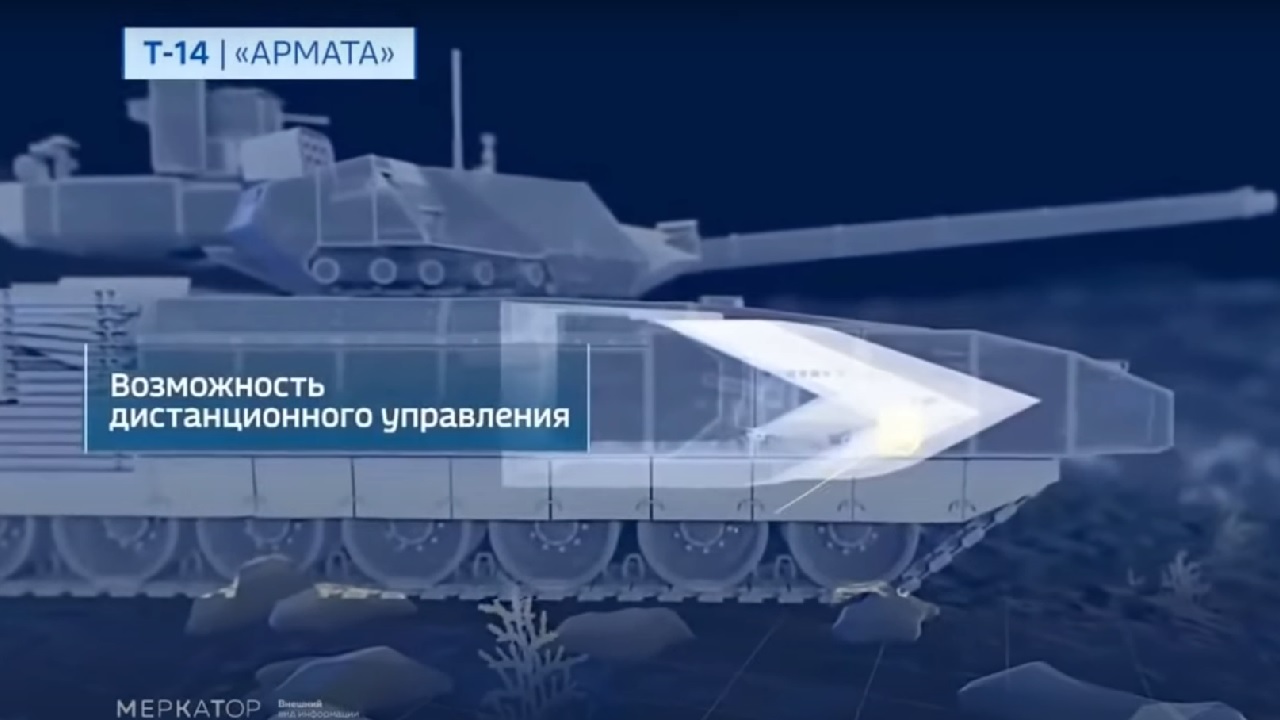Russia’s T-14 Armata main battle tank might be operating in the war in Ukraine if recent reports are to be believed. If so, what is the MBT’s impact?
There are several key variables to consider when answering that question, including ability to mass and tactical dynamics.
Russian news reports and other assessments of the T-14 Armata have hyped the tank as having advanced weaponry, composite armor, an unmanned turret, and speeds reaching up to 55 miles per hour.
Some of this may be difficult to confirm, and the combat value of technological advances depends on their being paired with effective tactics.
Ukrainian Anti-Armor Tactics
For instance, Ukraine’s anti-armor tactics have been extremely effective. The Ukrainians use terrain, buildings, and narrow passageways to conduct hit-and-run ambush attacks against Russian tanks. Could T-14 Armata armor perform better than Russia’s T-72 and T-90 tanks?
It seems likely, given reports the T-14 is equipped with active protection systems.
Russian tanks have been destroyed by the thousands in Ukraine. They are especially vulnerable to attacks from above. If T-14 Armatas have hemispheric active protection systems, they might be better positioned to sense, detect, and intercept top-down anti-tank missile attacks, thus countering a key Ukrainian tactic. However, many active protection systems are not hemispheric — they can only detect ordnance fired from the side or straight-on, meaning these systems leave tanks vulnerable to attacks from above.
T-14 and the The Impact of Technology
The other key question pertains to the strength of the T-14’s armor composition. At 55 tons, it seems unlikely that a T-14 Armata would prove as survivable as the larger, heavier T-90 and T-72 tanks. However, perhaps Russian innovators discovered newer kinds of blended composite materials able to provide unparalleled survivability at much lower weights. Whether they have is largely unknown and quite relevant to the tank’s performance.
The largest and most impactful margin of difference, however, likely pertains to the effectiveness of the tank’s thermal sights, a technology that will determine the range at which T-14s can attack and destroy targets. Russian news outlets such as GRU Pycckoe report the T-14’s thermal targeting sights can detect and destroy targets during the daytime out to ranges of 5 kilometers, and can reach 3.5km at night. This may or may not be far enough to see, target, and destroy Ukrainian armored vehicles.
Regardless of range, T-14s might be vulnerable to Ukraine’s anti-armor tactics. Dispersed groups of dismounted fighters using buildings and terrain to obscure their positions might be effective against T-14 tanks. These are formations the Ukrainians have already employed to great effect, so while advanced thermal sights might see Ukrainian armored vehicles at impactful ranges, they are not necessarily immune to Ukraine’s tactics.
If T-14s prove to be vulnerable to Javelins, Carl Gustafs, and NLAWs, then long-range, high-resolution thermal sights might not be as impactful.
Kris Osborn is the Military Affairs Editor of 19FortyFive and President of Warrior Maven – Center for Military Modernization. Osborn previously served at the Pentagon as a Highly Qualified Expert with the Office of the Assistant Secretary of the Army—Acquisition, Logistics & Technology. Osborn has also worked as an anchor and on-air military specialist at national TV networks. He has appeared as a guest military expert on Fox News, MSNBC, The Military Channel, and The History Channel. He also has a Masters Degree in Comparative Literature from Columbia University

